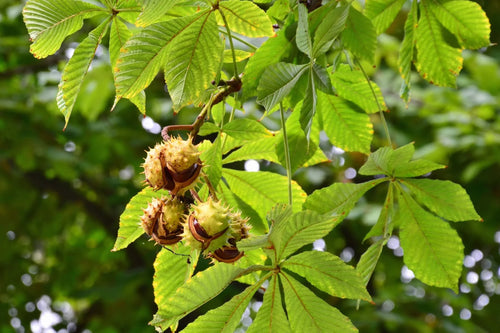
Sweet chestnut trees, valued for their majestic presence and edible nuts, have graced British landscapes for centuries. In early summer, they produce long, slender catkins that add a subtle ornamental touch and attract pollinators. Their glossy, lance-shaped leaves create a dense, green canopy that turns a golden yellow in autumn. By late autumn, their spiny husks split open to reveal shiny, edible chestnuts—perfect for roasting, baking, or incorporating into seasonal dishes. Sweet chestnuts are long-lived, fast-growing, and their upright, spreading form makes them ideal for larger gardens, parkland settings, or as part of a traditional woodland planting.
Known for their resilience, sweet chestnut trees thrive in well-drained, acidic to neutral soils and perform well in sunny or partially shaded positions. In addition to their aesthetic and culinary appeal, they provide important habitats for wildlife, offering shelter, pollen, and food sources throughout the year.